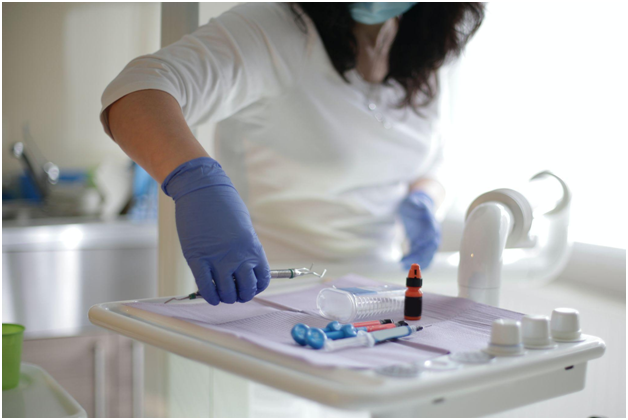There is much to celebrate when you reach fifty years old. Discounts begin to appear , investments begin to mature, and what’s the saying? With age comes wisdom.
But for all the money saved and the wisdom accumulated, there is a small price to pay: It is time to take care of your health .
“What we’re seeing is that some chronic diseases are often diagnosed after age 50,” says Dr. Renuka Tipirneni, an internist and assistant professor in the Division of General Medicine at the University of Michigan.
The good news is that many of the disorders that appear in midlife can be controlled. And if they are detected early and treated immediately, it is possible to “avoid more serious complications”, explains Tipirneni.
Here’s what to watch out for after 50:
1. High blood pressure
A common disease that doctors see in patients past the age of 50 is hypertension , which is a major risk factor for heart disease and stroke.
One reason high blood pressure is so prevalent in this age group is that the vascular system changes as we age.The arteries become less elastic and the pressure inside them increases. The extra weight and stress that often accompany middle age can also contribute to the numbers continuing to rise.
The good news: High blood pressure is manageable with medication and lifestyle changes, including diet and exercise. Because the disease often has no symptoms, it’s easy to miss. In fact, nearly 1 in 3 adults with high blood pressure doesn’t know they have it, according to the Centers for Disease Control and Prevention.
That’s why Tipirneni recommends getting your blood pressure checked “more regularly” — at least every year — once you hit 50.
If you have a blood pressure gauge (they cost about $30), you can do it yourself. And pharmacies and health fairs often offer free blood pressure checks, Tipirneni says. Of course, your health care provider can take your blood pressure.
You want the reading to be no higher than 120/80, which is what the American Heart Association considers normal. Anything above 130 for the top number (systolic pressure) is considered high and requires a discussion with your doctor about possible treatments.
2. High cholesterol
Another factor that contributes to heart disease is high cholesterol, which can build up inside your blood vessels over time and form plaques that slow or block blood flow. These plaques can also break off and create a blood clot, or even cause a heart attack or stroke.
Like high blood pressure, the risk of high cholesterol increases with age. There are also no symptoms or warning signs of this problem, so it’s important to have your cholesterol checked regularly in midlife with a routine blood test that can be done at your doctor’s office. Diet and exercise can help lower cholesterol, as can medication.
3.Diabetes
Along with getting your blood tested for cholesterol, your doctor may also include testing for diabetes , another common disease that increases over the age of 50 and wreaks havoc on your health. According to the CDC, more than 34 million people in the United States have diabetes—the vast majority have type 2 diabetes—and middle-aged people are most at risk.
Diabetes can often be controlled with lifestyle changes, such as a healthy diet and physical activity.”Sometimes we also need to add some medications” to help control blood sugar (glucose) levels, says Kate Lorig, professor emeritus at Stanford University School of Medicine and a fellow at the Self-Management Resource Center.
As with high blood pressure and cholesterol, the warning signs of diabetes are often silent, so it’s important to get screened. If left untreated, diabetes can lead to a host of diseases, including kidney and heart disease, and vision loss .
Something important: Emerging research has linked COVID-19 with an increased risk of diabetes. It is not yet clear how a coronavirus infection could trigger the disease, although “it could be attributed to the effects of SARS-CoV-2 infection on organ systems related to diabetes risk”,the authors write in a recent CDC study . Experts say this relationship is another reason to take precautions that can reduce the risk of a coronavirus infection. If you’re concerned about your risk of diabetes after COVID-19, talk to your doctor about getting tested.
4. Arthritis
One disease that appears after the age of 50 but is regularly overlooked or dismissed is arthritis , especially osteoarthritis, which Tipirneni refers to as “the wear-and-tear type of arthritis” that occurs when the cartilage of the joint joint between the bones is damaged or disintegrates.
“It can be very bothersome, even before the age of 50, but especially after that age we see pain associated with arthritis appearing more frequently,” he says.
If you notice that daily activity is causing joint pain or stiffness, talk to your doctor. You’ll want to make sure it’s not rheumatoid arthritis, which is an autoimmune and inflammatory disease.
Treatment for osteoarthritis covers a whole range of possibilities. Increasing physical activity can help prevent further pain or disability, says Tipirneni. Your doctor may also recommend over-the-counter or prescription pain relievers to relieve discomfort.
5. Osteoporosis
Women in particular should pay attention to their bone health once they reach the age of 50, when osteoporosis , or weakening of the bones, becomes more common. In fact, nearly 20% of women over the age of 50 have osteoporosis, the CDC says.
That’s because one of the risk factors for osteoporosis is postmenopause, explains Dr. Lucy McBride, an internist in Washington, DC “As you stop producing estrogen, bone density generally decreases,” she says. The average age of menopause for women in the United States is 51, according to the Mayo Clinic.
Weight-bearing exercises—such as walking or upper-body resistance training, for example—can help reduce the risk of osteoporosis. It can also help to know how much calcium you’re getting and your vitamin D levels , both important factors for bone health
6. Cancer
Because accumulating age is the biggest risk factor for cancer , keeping up with routine screenings becomes important after age 50.
Women in this age group should have a mammogram at least every two years to screen for breast cancer, and men should talk to their doctor about prostate cancer screening. Colon cancer screenings should also be done more regularly, in both men and women.
7. Anxiety and depression
Regardless of what keeps you busy in midlife — your teens, work, your aging parents, or a combination of all three — chances are you’re stressed. And all that stress can take a toll on your mental health , which in turn takes a toll on your physical health.
“Because ultimately blood pressure, weight, cholesterol, cancer risk, all of those biometric measurements are based on your behavior. And those behaviors stem from emotional health,” says McBride.
According to the CDC, about 20% of people over the age of 55 experience some type of mental health problem, with anxiety and depression being among the most common.The coronavirus pandemic has only amplified this crisis. During the pandemic, about 4 in 10 adults in the United States have reported symptoms of anxiety or a depressive disorder, according to a survey by the Kaiser Family Foundation. Before the pandemic, that number was 1 in 10.
McBride’s advice? “You really need to make sure you take your whole self to the doctor” and talk to him about your stress levels and your relationship to food and alcohol , she says.
“Your brain is like any other organ. We have heart health, breast health, skin health, kidney health. We also have mental health. It needs to be recognized,” adds McBride.
Pay attention to your immune system
Another thing to check with your doctor once you turn 50 is vaccinations .
“Vaccines become much more important because in this age group the immune system starts to weaken a little bit and then there is more risk of getting infections,” says Tipirneni.
In addition to the annual flu shot, your doctor might suggest a pneumonia shot. Vaccination against shingles and its complications is also recommended for people over 50 years of age.



